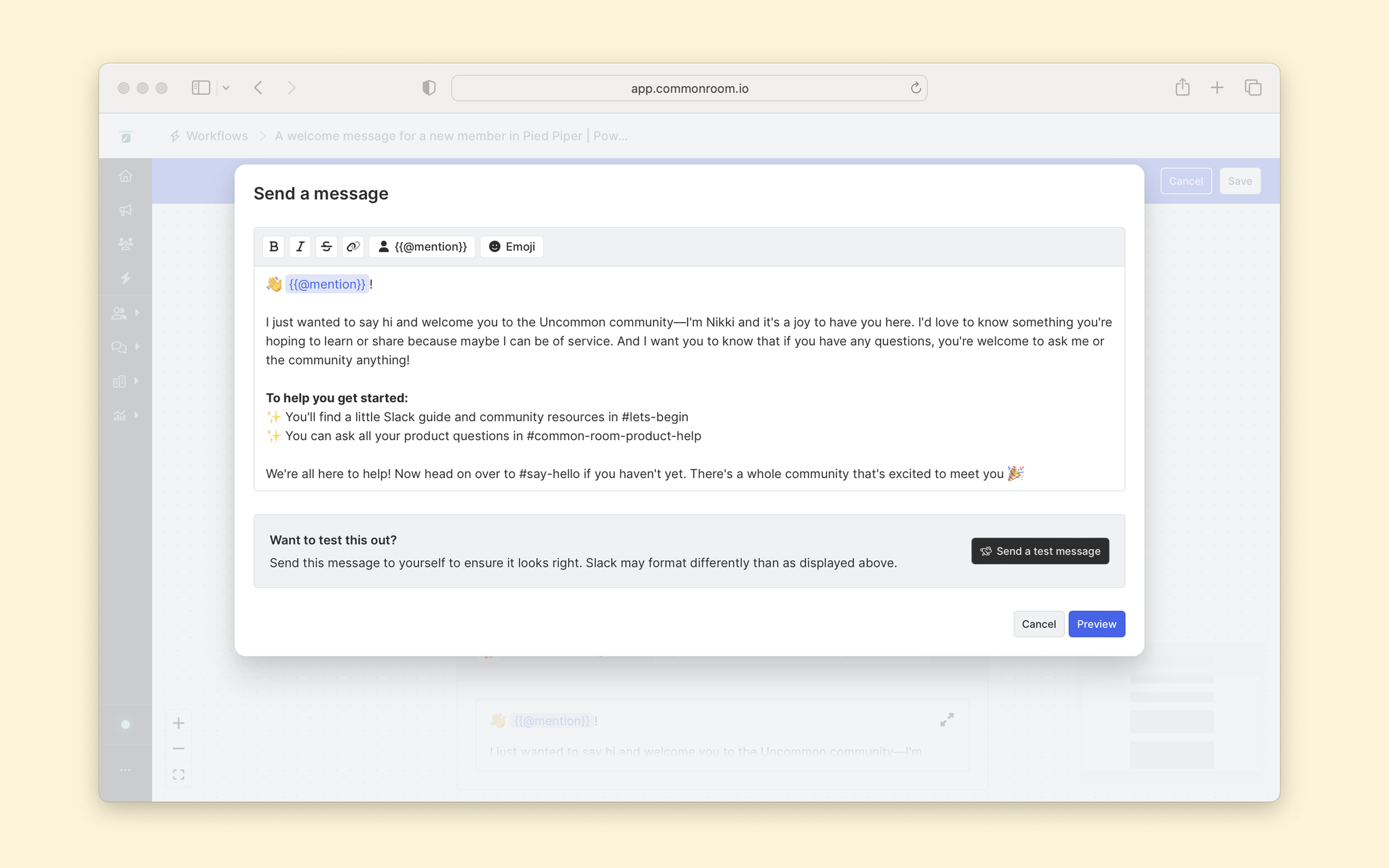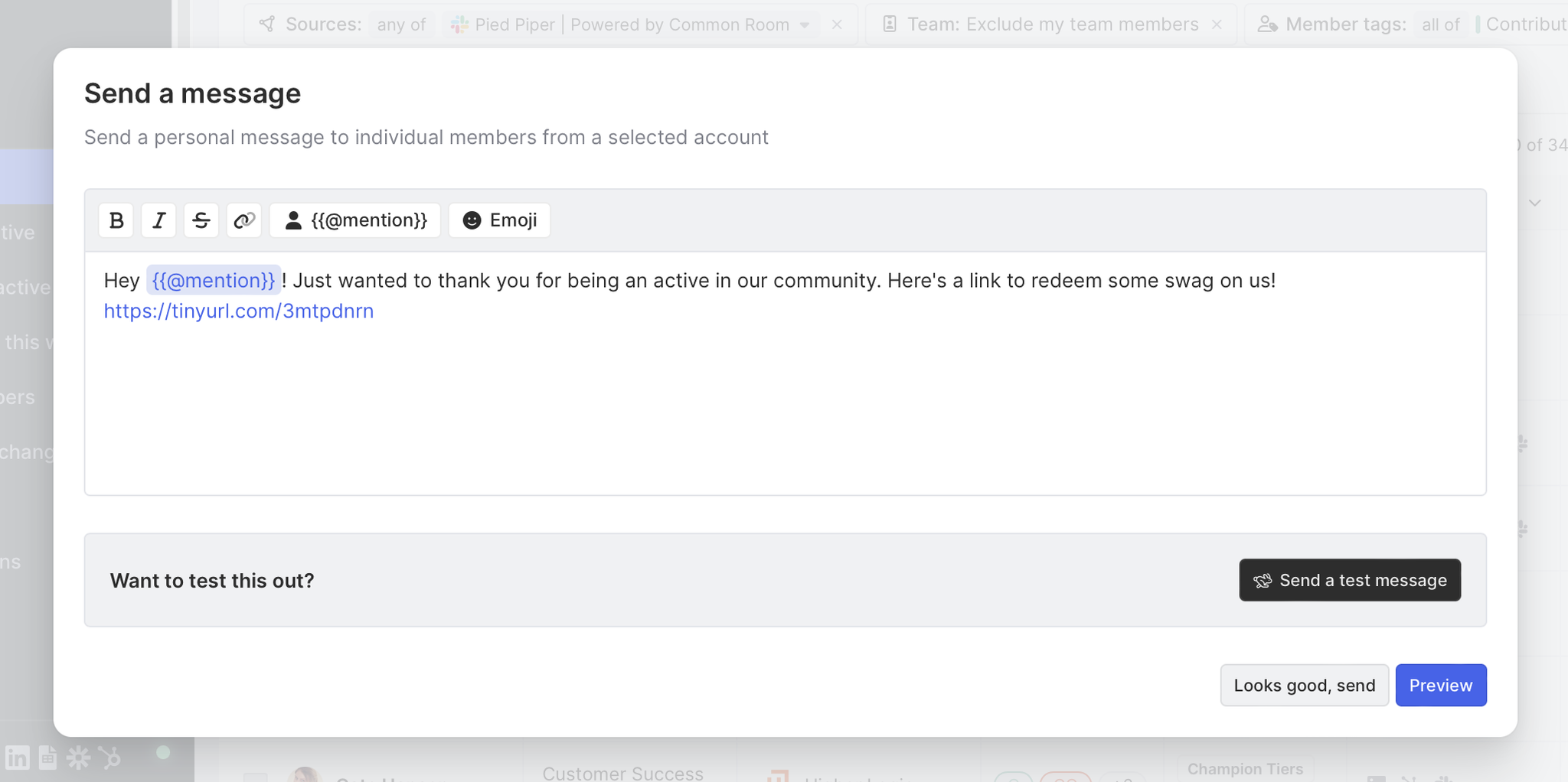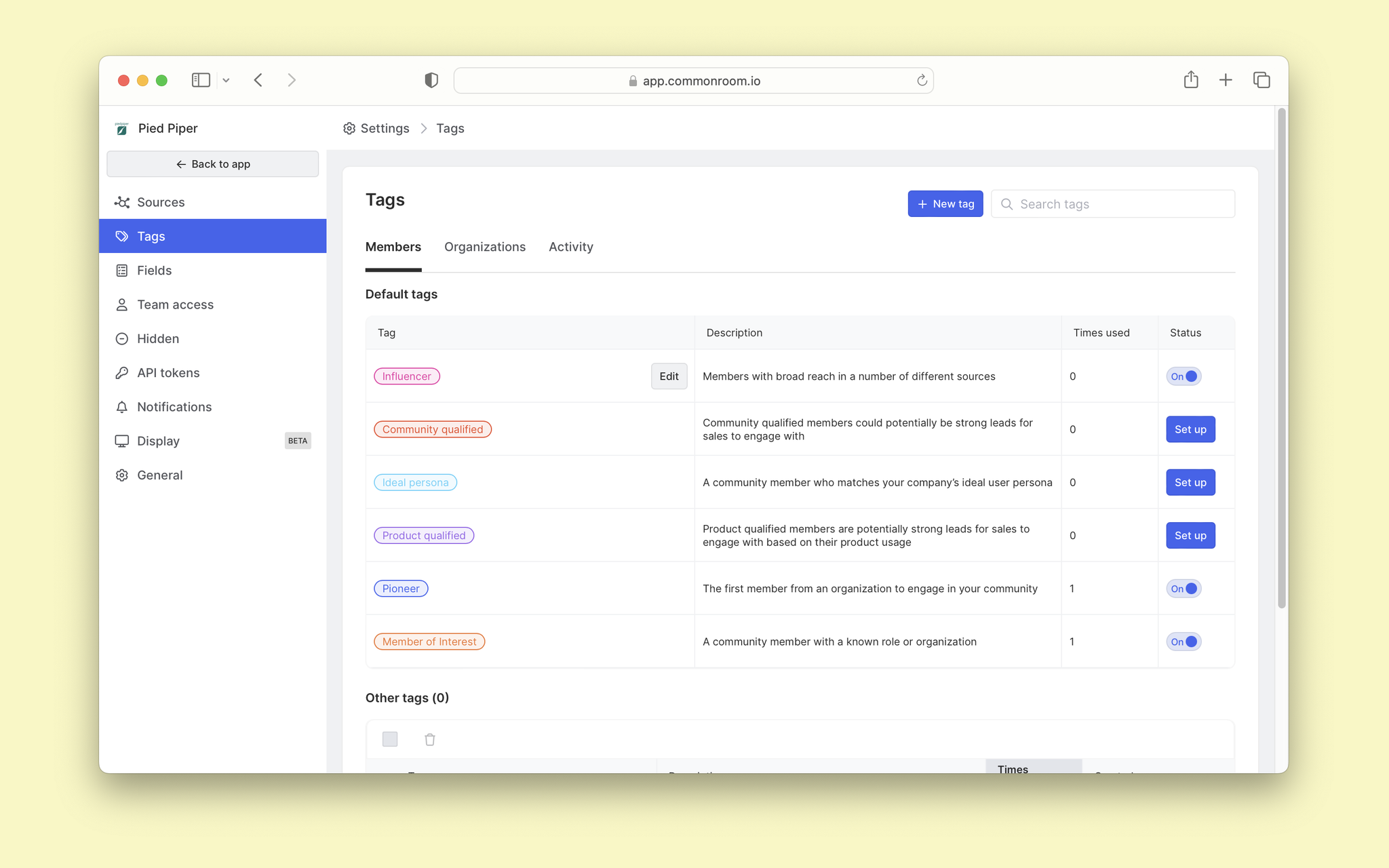We’ve written a lot about Slack communities—what they are, whether they’re the right fit for your company, how Slack compares to other community platforms (we’ve even written the ultimate guide to Slack community management).
And it’s not just because Common Room has a powerful Slack integration—it’s also because Slack is the foundation of our own community, Uncommon (come say hi!).
In our experience, it’s easiest to learn by example, so we’d like to walk you through our own Slack story.
Keep reading to see how we used Common Room to:
- Get our Slack community off the ground
- Engage and deliver more value to our Slack community members
- Drive business impact and prove the ROI of our Slack community
Should you choose Slack for your community?
Before jumping into the nitty-gritty details, it’s worth talking about why we chose Slack as our primary community platform in the first place.
To make a long story short, we wanted to be able to:
| Meet our community members where they were | Cultivate conversations with our community | Shed light on our community |
|---|---|---|
Survey results showed Slack was one of the top choices for connecting with community members. | Slack provided the opportunity for real-time chatting as well as asynchronous threads. | Slack made it easier to help our members (and our team) know who they were talking to. |
It also didn’t hurt that Slack came with a lot of handy community management features.
But more importantly, it gave us the chance to create a better product for our customers. Slack is one of Common Room’s main integrations. Using it to build our community meant we could continually test, iterate, and optimize how that integration worked.
How to seed your Slack community
When Common Room first emerged from stealth, we encouraged people to sign up for our waitlist and join our community newsletter mailing list. That's how we started—a little newsletter with a lot to share about community building.
Once we decided to make Slack the daily home of Uncommon conversations, we seeded our community by asking our newsletter subscribers to join. Of approximately 2,500 subscribers, a few hundred made the move to Slack.
Early on we had to decide whether our Slack community would be open or application-based. We went with open—part of the ethos of the people we were trying to connect with is that it’s important to have spaces where people can come together, share, and learn.
Of course, having a Slack community anyone can join means being extra vigilant about the activity in your community and providing guidance when necessary. That meant setting expectations (creating a code of conduct is key!), proactively explaining what certain Slack channels were intended for, and being willing to reach out to members privately to address any issues or concerns if needed.
We started with seven original Slack channels:
| Channel | Description |
|---|---|
#say-hello | A place for meeting and greeting fellow community members |
#community | A place for asking and answering questions related to growing, engaging, and supporting your community |
#learning | A place for sharing community-related content and resources |
#events | A place for sharing and finding community-focused events, meetups, and happenings |
#job-board | A place for sharing and finding community-driven job opportunities |
#celebrations | A place for celebrating each other (and ourselves) for wins big and small |
#banter | A place for non-community-related chatter, ideas, and musings |
Common Room’s identity resolution and profile enrichment took the guesswork out of understanding who our Slack community members were and where else they were engaging with us.

We also used Common Room to automate onboarding messages, like our welcome message, to make sure every new member was greeted and had what they needed to get started no matter what time of day they arrived.

These and other automations gave me a ton of my time back, which I could then use to focus on higher-impact work (like building a tutorial to onboard new users). It’s a similar story with Common Room customers: Fintech company Moov saves more than 100 hours each year on member tracking and onboarding.
With our Slack community off and running, we started to drill down into our community members and the best ways to engage them.
How to grow your Slack community
We started promoting our Slack community on our website, in our content (like this!), and across our owned digital channels.
And as our community grew, it evolved.
For instance, we realized we needed to carve out dedicated spaces for specialists in the community world, such as developer relations professionals. So we created a Slack channel called #devrel-deep-dives.
And as more people from Europe, the Middle East, and Asia joined our community, it became clear that time differences could be a big turnoff (it’s no fun talking community when everyone else is asleep). So we created our #uncommon-emea channel specifically for these members.
Common Room let us get a pulse on our community (and what got it talking).

Beyond learning which topics mattered most to our community members, we could also see how they felt about them.
Of course, we didn’t just rely on artificial intelligence. We surveyed our community members to learn why they joined Uncommon in the first place and what they were hoping to get out of it.

Once we got to know our community members more, we went to work creating relevant content and tailoring engagement to their wants and needs.
How to engage your Slack community
In a perfect world, you’re able to jump into any and every Slack conversation in real time. In the real world, you need to find ways to scale.
That meant prioritizing and automating where possible.
Of course, no community is monolithic. Our members live in different regions, face different challenges, and are interested in different things. That’s why we set out to balance scalability with personalization.
Common Room’s filters and segments gave us a way to manage and engage different member cohorts more efficiently.
Say there’s a community-led meetup happening in Toronto next week. I could filter members by location, add them to a segment specifically designed for our Toronto members, and bulk DM them.

As your community grows, it gets easier for things to fall through the cracks. We used Common Room to stay on top of all the activity we wanted to know about.

With our real-time team alerts set up, we cut the time it took to respond to our community members. The same goes for our customers: AI-driven software delivery platform Harness saw a 25% improvement in community response rate after adopting Common Room.
We also sped up response time by using Common Room’s automated messaging features.

In the course of engaging our community, we also uncovered which members would make ideal champions (and be our best partners and advocates across other digital channels).
How to find champions on Slack
We’ve already written about how we seeded our champions program using Common Room, but finding and inspiring brand ambassadors is incredibly valuable (if you click the link above, you’ll see that organizations that have them generate three times more average recurring revenue than those that don’t), so it’s worth repeating.
After we aligned on the goals of our champions program, we set the bar for what our champions should look like: top Slack community contributors, active product users, and people who drive tangible impact across our community in whichever channels they participate in.
We created a special segment for our champions and focused on ways to reward them, inspire them, and engage them. Champions don’t just make your community a more vibrant place, they also act as brand ambassadors in external communities. People trust people over brands, so having champions who can lend your company credibility, extend product knowledge, and provide education is essential.
Common Room’s impact points let us take community impact from an abstract concept to a concrete metric.
We also used Common Room to gain more insight into how different members operate in our Slack community.

We could see firsthand how our community flywheel was delivering value, from surfacing valuable product feedback to driving word-of-mouth marketing. But seeing and proving are two different things.
We needed to make sure our success on Slack was quantitative, not just qualitative.
How to measure the community impact of Slack
When you’re first starting out, you’re probably going to be most concerned with membership and engagement metrics, such as how many members you have, how responsive they are to each other, and what their overall sentiment is.
But as your community evolves, you’ll want to tie it back to the business wherever possible. You can check out our business impact report to get an idea of the types of business metrics your Slack community can influence, from impact on open sales pipeline to speeding up sales cycles.
One of the key metrics we used was membership growth among our ideal customer profile (ICP). We know that customers who fit our ICP generally get (and give) deep value in the Uncommon community, as well as get the most value out of Common Room. So we filter them, add them to an auto-renewing segment, and keep an eye on them to make sure they’re getting everything they need.
Ultimately, the goal is to help them realize more value from our product so they feel confident about joining a sales conversation.
Common Room’s reporting allowed us to analyze our community performance on demand and in real time, as opposed to doing it the old-fashioned (and manual) way.

No matter what you’re reporting on, the goal is to uncover insights and show impact, not cobble together inconsistent metrics that take time away from building community programs with and for your members. We’ve saved tons of time with Common Room’s reporting, and so have customers such as Asana, which saves more than 100 hours annually on manual data reporting and analysis.
What we’ve learned so far
No two Slack communities are exactly the same, but if you manage one, three things are likely true:
- You love the work you do.
- You’re trying to find the time to do it.
- You’re struggling to connect that work to the business’s bottom line.
That’s why it’s so important to use tools that are purpose-built for community.
Slack is an amazing platform, but it’s not designed with the ins and outs of community building in mind. Don’t be afraid to get started with Slack’s free plan, but remember that if you want to save more time, uncover more insights, and take action at scale, you need tools that are designed for you.
And with that, I’ll leave you with one last piece of advice: Think big, but start anywhere—including small.
The best way to grow your community is by repeating what you did to get it off the ground in the first place: Focus on the people who are genuinely excited about what you’re doing, prioritize their challenges and goals, and build incrementally in collaboration with them.
Thriving Slack communities are powered by people—if you listen to and understand their wants, needs, and motivations, you’ll never lose your North Star.
Connect your Slack community to Common Room
Ready to take your Slack community to the next level?

